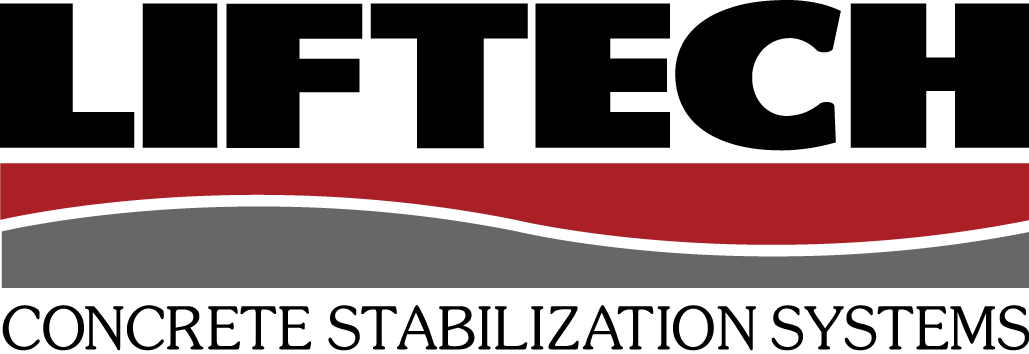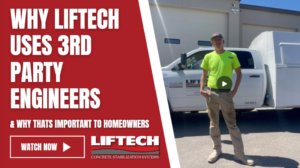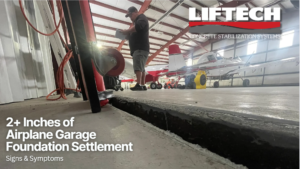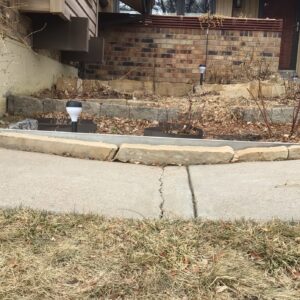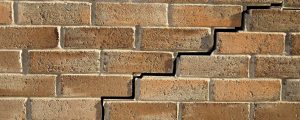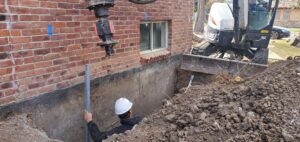Colorado Foundation Repair Services
Liftech is the highest rated foundation repair company in Colorado
We only utilize the highest quality foundation repair methods. So when we are done repairing your foundation, you are done worrying for good. Schedule a free on-site foundation evaluation:
Foundation Repair
Solutions For Foundation Repair
Helical Piers
Helical piers, also referred to as piles, are deep foundation steel pins used to secure new or repair existing foundations and give them even more stability than before. As a result, helical piers are one of the best ways to repair your foundation in Colorado.
Wall Stabilization
Wall anchors and braces can help prevent wall movement. Additionally, Liftech can straighten walls that are already bowing. In short, if your walls aren't straight, it's time to call Liftech.
Crack Repair
Cracks allow moisture and other contaminants to infiltrate the concrete compromising its structural integrity. Therefore, it's imperative you seal foundation cracks of a certain size in your foundation before they cause more damage.
Floor Stabilizers & Joist Support
Liftech installs industry leading foundation jacks that are designed to bolster sagging floor joints, offering exceptional support. Made from high strength steal, Liftech floor stabilizers work wonders, reinforcing your crawl space beams, aiding in precise floor leveling, and delivering a streamlined, rapid installation experience
Egress Window Installation & Repair
Egress window installation is one of Liftech’s most popular services. Our team of experts can install egress windows in homes and buildings quickly and efficiently, ensuring that the structures meet local building codes and safety standards.
General Information On Liftech's Foundation Repair
Liftech is the highest rated foundation repair company in Colorado. We only utilize the highest quality foundation repair methods. So when we are done repairing your foundation, you are done worrying for good.
Liftech is Colorado’s Choice For Honest Foundation Evaluation
Liftech prides itself in not only recommending the best foundation repair methods, but also in making sure our customers are informed. Check out our blog our Youtube channel to learn more.
TREES AND VEGETATION
The expansive root systems of large trees and plants can push against your foundation. In time they can even make their way under your foundation in search for moisture. This is often the cause of shifting and small, concentrated cracks. Root systems can also combine forces with other sources of failure. There, they can at times be the “root” cause of the problem.
INADEQUATE DRAINAGE
When not planned properly and graded correctly, the overall drainage in subdivisions and within individual lots can cause water to flow towards the structure, instead of away from it. Years of water intrusion around a structure can not only lead to potentially harmful moisture issues (e.g., mold), but also cause the foundation to shift and move.
POOR COMPACTION
Entire subdivisions and individual lots within them are often over-excavated in preparation for new homesites. This may also include the mixing of soils to equalize them and re-compacting them prior to structures being placed on top of them. When a foundation is not poured on stable soils and/or properly engineered to account for shifting soils, this can lead to lead to movement in the overlying structure.
HYDROSTATIC PRESSURE
When gravity pushes down on large volumes of groundwater around your foundation, it increases hydrostatic pressure within the soil. This places lateral pressure on your foundation, which can cause it to shift and crack.
SOIL SHRINKAGE
Hot weather can sap soil of its moisture. So much like a kitchen sponge drying out on your counter, the soil will shrink and take up less space. Therefore when soil around your foundation dries out and shrinks, it leaves voids around your foundation. This can lead to sinking, settling, and shifting.
HEAVING
Expansive clays, including Bentonite, are found throughout Colorado’s Front Range. In areas with high concentrations of clay, the ground can swell. In time this can lift everything on top of it, foundations included. As soon as heaving can be identified contact a professional to find a solution.
EROSION
Heavy rain and snowmelt can eat away at the soft soils around and under your foundation. So over time, this can create voids. As a result these voids will cause your home to shift laterally or “settle” deeper into the ground.
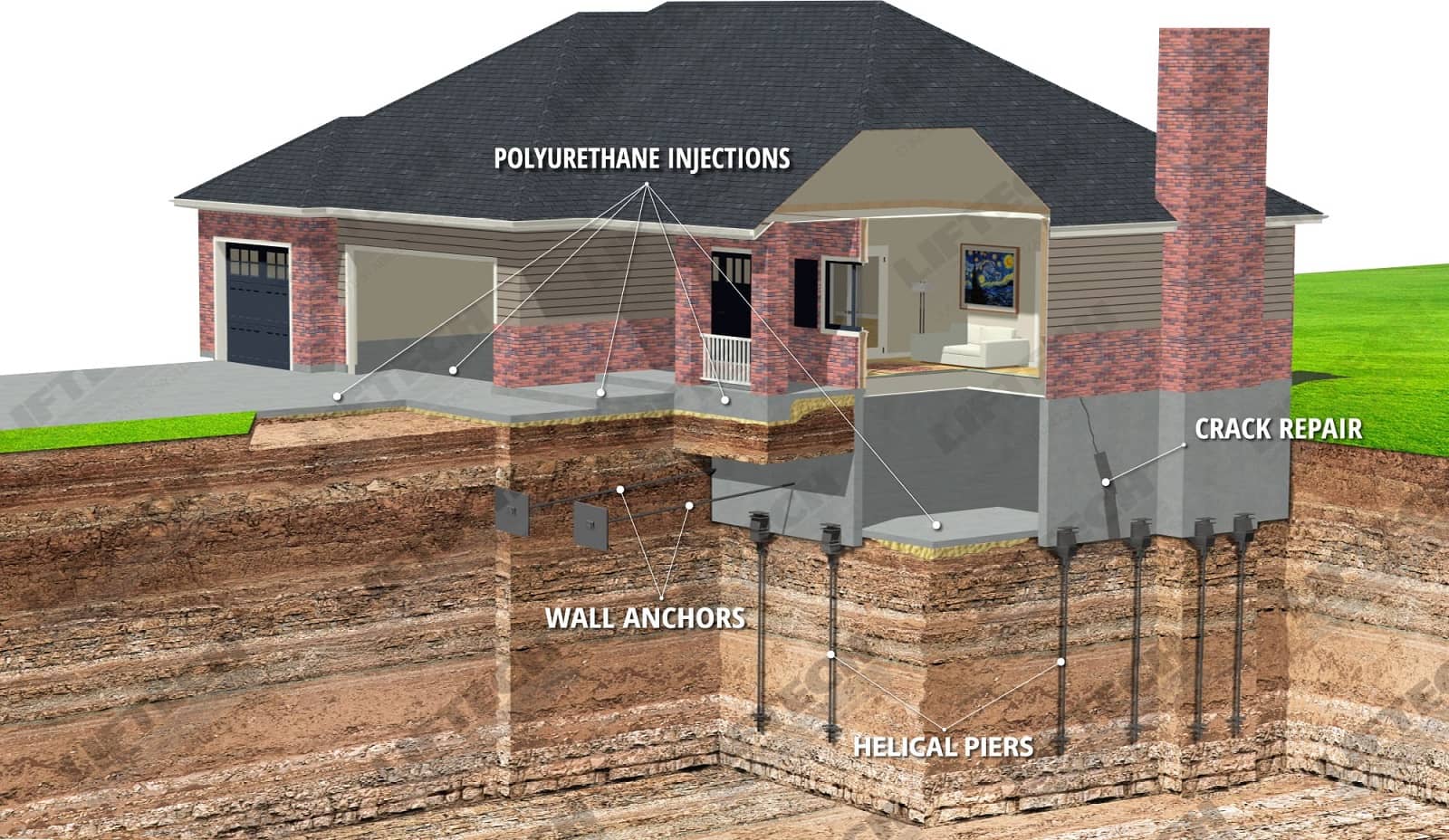
Why do I need foundation repair? What causes a foundation to fail?
Expansive clay, loose or improperly compacted soils, and improper grade and maintenance around your home are a few potential causes of structural failure. In Colorado, up and down the Front Range contain high levels of bentonite. Given that, there is a high chance of movement in the structure and foundation failure. Older homes and homes that don’t have additional structural support (piers, footings, etc.) are often adversely impacted by high levels of expansion and contraction in the soils. Without a solid foundation, your home might be a ticking time bomb for larger, more expensive repairs if left unaddressed. So in reality the worst-case scenario is you can be left with an uninhabitable (and worthless) structure! Until you know your foundation is secure, make sure to keep an eye out for these signs of failure. Additionally, Liftech offers premier concrete leveling services, so if the repair is just sinking concrete, Liftech as you covered!
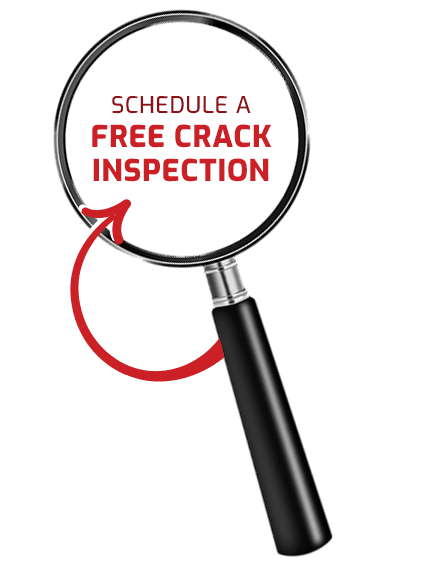
Signs Of Settlement In Your Home
Stair stepping in bricks
As a home shifts and the foundation moves. As a result you will often see the exterior brickwork or siding start to break, and cracks will develop in the mortar between the bricks. Often the cracks will “stair step” up the exterior of the house.
Bowing & leaning walls
A leaning and moving foundation means that the walls sitting on top of that foundation will move as well. Often you will see the exterior walls fall “away” from the house. When the foundation breaks and moves laterally, walls will often bow in or out depending on the movement in the underlying foundation.
Cracks in the foundation
Hairline cracks in a foundation are fairly common as even the best constructed homes move slightly over time. But larger horizontal or vertical cracks that are greater than 1/8 inch or have lateral separation between them are usually signs of significant movement in the foundation that should be repaired.
Leaning chimneys
Many times chimneys are either tied to the foundation or they are sitting on their own footing. In the long run if the foundation or footing under the chimney shifts, without proper support the overlying tall & narrow structure of the chimney will start to fall away from the house. As a result leaving a potentially hazardous situation at your home.
Sagging rooflines
Movement in the areas supporting the roof (interior/exterior walls, pillars, trusses, etc.) will transfer to the overlying roof. As a result you will often see sagging or crooked roofs develop. Therefore it is wise to keep an eye on that roofline.
Crooked garage frames
Garages usually sit on foundation walls or footings. So as settlement occurs in those areas, the overlying structure of the garage will twist and bend. As a result, leaving the frame of your garage crooked. Often you will notice this when your garage door doesn’t seal properly along it’s perimeter or won’t open or close properly without binding up in the tracks.
Interior Signs You May Need Foundation Repair
“Popping” Sounds
Does it sound like movie theater at night with popcorn popping in your kitchen? Are you convinced that you live in a haunted house with all of the creaking you hear while you are lying in bed? In fact, you probably don’t need to call Ghostbusters, but your home is indeed groaning from the uncomfortable movement it is experiencing. In any event, constant cracking and popping sounds that appear to worsen may indicate you have some more sinister problems going on other than ghosts!
Sagging & Uneven Floors
As the foundation that the floors sit on begins to move, the floors themselves start to sag and bend. Do you feel uneasy when you walk across your floors? Are there ridges under the carpet or areas where your tile or wood flooring have cracked or separated? Do the floors squeak and crackle excessively when you walk across them? These are all tell-tale signs of foundation movement in the home. Many times you will see the movement in the floors will “transfer” from the ground level to the upper floors.
Cracked & Bowed Walls
Similar to the exterior walls, interior walls will flex, bend and break as the structure begins moving. In short you will see large drywall cracks develop in the corners of rooms and around door and window frames. Drywall seams become visible as the large panels shift and move.
Drywall Cracking
Small hairline drywall cracks inside a home are to be expected, but if the cracks you are seeing are worsening, spreading and are generally more than 1/8 inch, the foundation is likely on the move. As a result of the home twisting and turning, the large rigid surfaces like drywall will ultimately bend and break. In light of this discovery, many homeowners patch these cracks but they almost always return!
Doors & Windows That Won’t Open / Close
Probably one of the most common signs of settlement is doors and windows, both interior and exterior, that won’t open, close or latch properly. Looking at the frames for the doors and windows, you will see they are out of alignment with uneven gaps along the top, bottom and/or sides when shut. Rubbing on the floors and around the frames is common and the homeowner often re-trims these areas instead of addressing the underlying problem (which will likely come back!).
Flexible & Competitive Financing Options
Several Loan Options
Today's Best Rates
No Pre-Payment Fees
Fast Funding
Easy Process & Support
News, Blogs, & Updates About Foundation Repair
Ensuring Quality Foundation Repairs with Independent 3rd Party Structural Engineers
At Liftech, we prioritize the safety and integrity of your home by partnering with independent, third-party structural engineers. Unlike other companies that employ their own engineers, we believe in the importance of unbiased, expert evaluations to ensure your...
Signs Requiring Foundation Repair @ Loveland, Colorado Airport Garage
Besides the obvious of 2+ inch settlement of the garage concrete slabs, what are some signs and symptoms that require foundation repair? Here are some examples from an airplane garage in Loveland, Colorado.Symptoms Requiring A Foundation Repair Evaluation From An...
Concrete Cracks: Types and Common Causes
Concrete Cracks: Types and Common Causes Anyone who has walked down the sidewalk has seen cracks in concrete before but may not have given much thought to them. That is, until your concrete driveway, floor, or foundation cracks and you require concrete repair...
Liftech Saves Commercial Properties and Facilities Time and Money
Concrete Leveling Saves Commercial Properties Time & Money Liftech Polyurethane Concrete Raising is a perfect solution for commercial properties and facilities with settling interior floors. We know that your company’s productivity is paramount to its success!...
5 Signs Your Home Needs Foundation Repair
5 Signs Your Home Needs Foundation Repair You love your home, but even if it looks perfect from the outside, there may be underlying issues that need to be addressed. For example, when the foundation needs repair, you may not notice the signs until it is too late....
When To Get Your Foundation Inspected
When To Get Your Foundation Inspected If you are noticing signs that your foundation may have issues, you may be wondering when is the best time to get it inspected, are you already too late? Is it too early and you’re just going to be sold some expensive...
Why Repair Your Foundation In Colorado?
Regardless of the cause, foundation movement left unattended could not only cause serious damage to the structure of the home, but it may even render it unsafe, useless and worthless. Homes in need of structural repairs are often impossible to sell except at “fire-sale” prices. Banks often won’t lend on homes with serious structural issues either. And cracks in the foundation and leaky windows and doors can lead to bigger problems with water infiltration and exorbitant energy bills! Do not wait until it’s too late to address these problems. Contact us now for a free evaluation.
What Type of Foundation Repair Does My Home Need?
Once our highly trained personnel have evaluated your home and put together a bid for your repairs, we will offer you a comprehensive plan involving some or all of our available Foundation Repair Services. For more information on these services, please visit the links below! Ready to schedule your free evaluation?
Helical Piers Vs Push Piers: Which One To Choose For Your Foundation Repair?
Do you have a sinking foundation, and are trying to figure out how to fix it? Are you getting some bids on resistance piers, and some on helical piers and don’t know which to go with? Let’s talk about the difference between the two piers.
